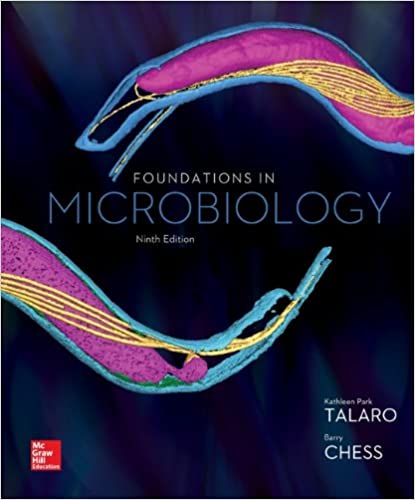
Foundations in Microbiology 9th Edition by Kathleen Park Talaro, Barry Chess
Edition 9ISBN: 978-0073522609
Foundations in Microbiology 9th Edition by Kathleen Park Talaro, Barry Chess
Edition 9ISBN: 978-0073522609 Exercise 1
An Introduction to Concept Mapping found at http:\\www.mhhe.com\talaro9 provides guidance for working with concept maps.
Supply your own linking words or phrases in this concept map, and provide the missing concepts in the empty boxes.
Supply your own linking words or phrases in this concept map, and provide the missing concepts in the empty boxes.

Explanation
To properly answer this question, we discuss microbiology largely through the different organisms we study as microbiologists and organize the major groups based on the types of cells they possess (prokaryotic or eukaryotic). Using the table below, we will construct a concept map around this idea.
We can also consider microbiology by breaking it down into particular fields of microbe study, such as bacteriology (bacteria), virology (viruses), mycology (fungi), protozoology (protozoa), phycology (algae), and parasitology (infectious eukaryotes). All of these groups are included because they are too small to be seen without imaging technology such as light microscope or an electron microscope. The concept map will look as follows:
The concept map will look as follows: 
We can also consider microbiology by breaking it down into particular fields of microbe study, such as bacteriology (bacteria), virology (viruses), mycology (fungi), protozoology (protozoa), phycology (algae), and parasitology (infectious eukaryotes). All of these groups are included because they are too small to be seen without imaging technology such as light microscope or an electron microscope.
 The concept map will look as follows:
The concept map will look as follows: 
Foundations in Microbiology 9th Edition by Kathleen Park Talaro, Barry Chess
Why don’t you like this exercise?
Other Minimum 8 character and maximum 255 character
Character 255


